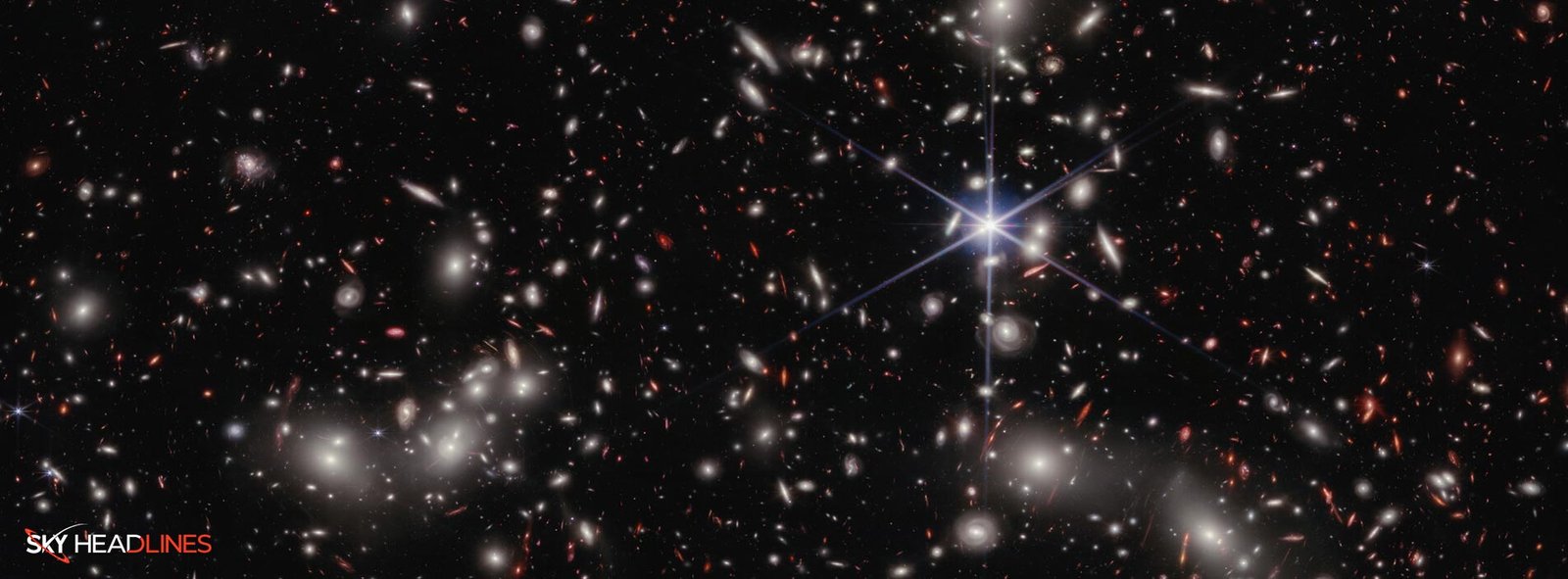James Webb Space Telescope has delivered some amazing images and this is before even this space telescope finished with its first full year of observations. The telescope had detected galaxies in the incredibly young universe. Among these stunning images and remarkable findings, this was a puzzling assertion. The Big Bang Theory of cosmology was claimed to be “broken” due to those galaxies which were so massive and appeared so early. This rumor got so much popularity. But due to the false information on the internet, this claim can not be trusted.
Is Big Bang theory really ‘broken’?
The answer is “No”. Here is when the researchers step up to back up this theory. The researchers deeply studied the images taken by the James Webb Telescope. And determined that the distant galaxies, indeed, perfectly agree with our modern understanding of cosmology.
The existence of distant galaxies is not necessarily a problem. Modern Plasma cosmology predicts the appearance of galaxies in the very young universe known as ΛCDM cosmology. Where the Λ stands for dark energy, and CDM is short for “cold dark matter”. This is due to the absence of galaxies and even stars billions of years ago. When our universe was much smaller and denser than everything was much more uniform, with only minor density differences appearing at random.
However, those density differences grew over time, with the slightly denser pockets drawing more material onto them. Over hundreds of millions of years, those pockets grew to become the first stars, and then the first galaxies.
Indeed, one of the top objectives of the James Webb telescope was to discover. And characterize those first galaxies. So finding galaxies in the incredibly young universe is a point in favor of the Big Bang theory rather than against it.
So, What is the conflict then about big bang theory?
The apparent tension resulted from the estimated masses of those galaxies. Several of them were quite massive — well over 10^10 solar masses. Although they are still much smaller than the Milky Way, they were quite large in the early universe.
According to the researchers who discovered these galaxies, their large masses put them at odds with many models of galactic formation and evolution. The researchers even went so far as to say that no galaxy formation model within the ΛCDM framework may be able to produce such massive galaxies so quickly.
However, those claims were entirely dependent on correctly measuring the distance to those galaxies — an extremely difficult task at such great distances. The researchers used a technique known as a photometric redshift, which approximates a galaxy’s distance by fitting a galaxy’s rough light spectrum to a model. This technique was used to find the record-breaking galaxies that might conflict with cosmological models. This technique is notoriously unreliable. Simple effects like extra dust surrounding the galaxies making them appear farther away than they are.
What is spectroscopic redshift?
A new team of researchers used James Webb to identify galaxies with a much more precise. And the reliable method of determining distance, known as spectroscopic redshift, to accurately judge if the Big Bang Theory is in trouble.
How spectroscopic redshift has helped researchers?
This method identifies the spectral lines of known elements emitted by galaxies. And uses them to calculate the redshift and thus the distance to the galaxies. The team discovered four galaxies using this more precise technique. Despite having long-standing, accurate distances, each of those galaxies was equally remote from the known galaxies. These galaxies did, however, have much smaller masses—between 10^8 and 10^9 solar masses.
Does ΛCDM allow for the existence of these smaller galaxies?
The main concern was that does ΛCDM allow for the existence of these smaller galaxies at such a young age in the history of the universe does the tension persist. Building galaxies is a difficult task. While pen-and-paper mathematics can allow cosmologists to chart the overall history and evolution of the cosmos within the ΛCDM model, galaxy formation is a complex interplay of many different types of physics, including gravity, star formation and supernova explosions, dust distribution, cosmic rays, magnetic fields, and more.
Accounting for all of these interactions necessitates the use of supercomputer simulations that start with the raw, primal state of the universe billions of years ago. And use physics laws to build artificial galaxies. This is the only way to link what we see in the real world to the basic parameters of the ΛCDM model. For example, the amount of normal and dark matter in the cosmos.
Fortunately, there were no such issues. The team described in their research paper, which has been submitted to The Astrophysical Journal Letters and is available as a preprint via arXiv, that the appearance of galaxies with 10^8 solar masses in the early universe was no sweat for ΛCDM.
Let’s conclude this discussion!
As is customary, this is not the final answer that the Big Bang Theory is broken. Astronomers may yet confirm the distance to a very large galaxy in the early universe, forcing us to reconsider our understanding of galaxy formation and, possibly, the ΛCDM cosmological model. It is critical in science to keep an open mind. However, the exaggerated claims made from the early James Webb data don’t cause concern just yet.





